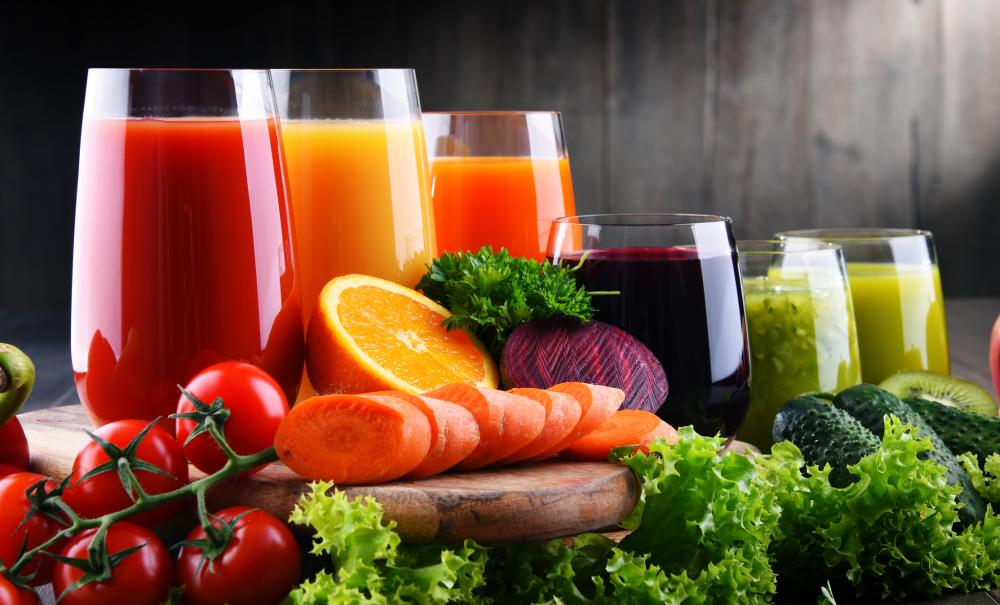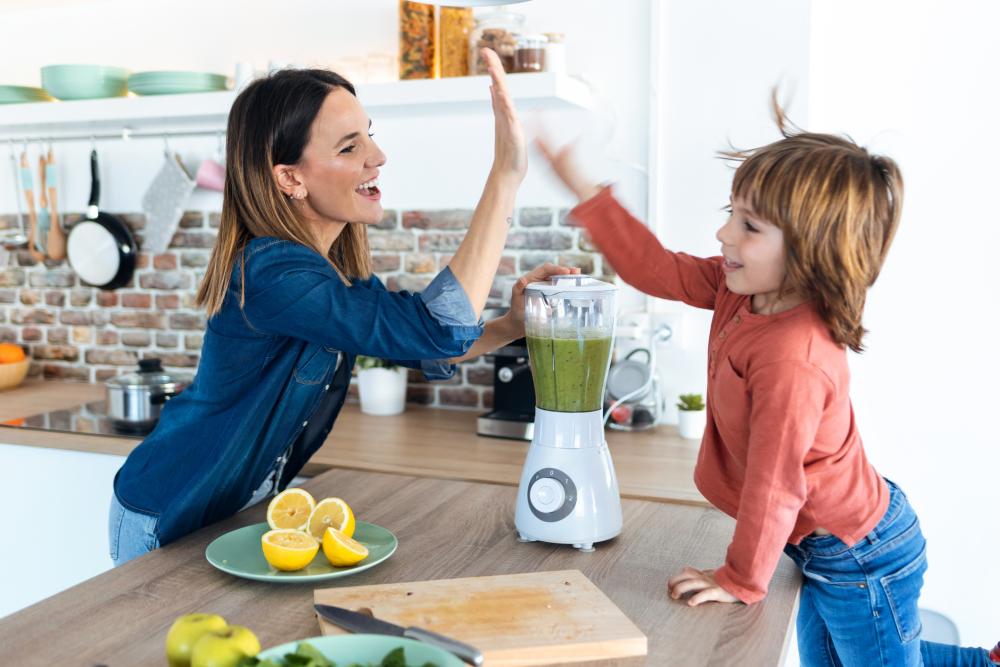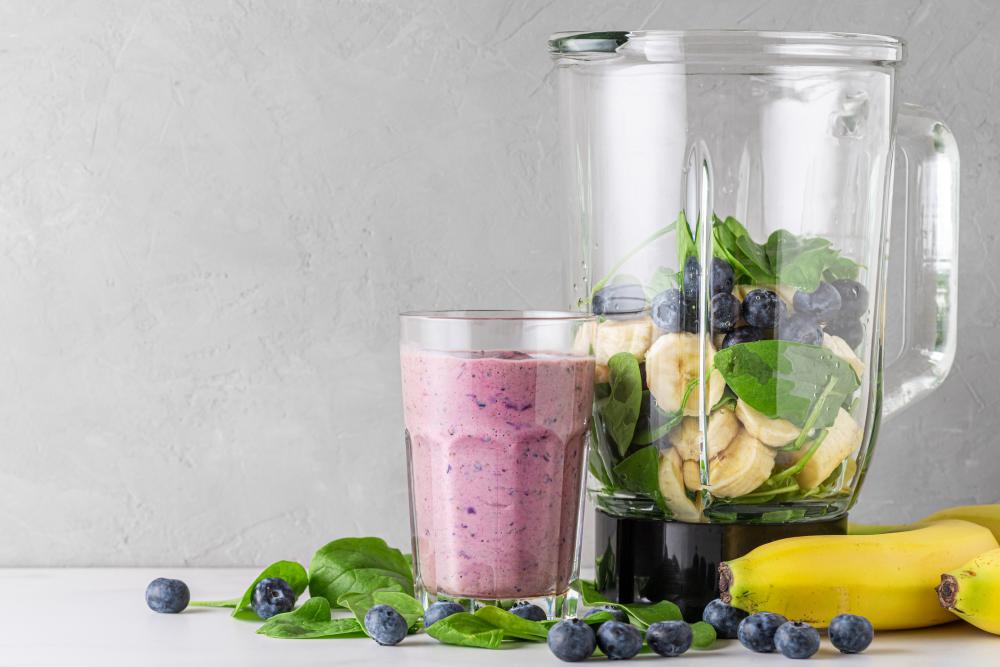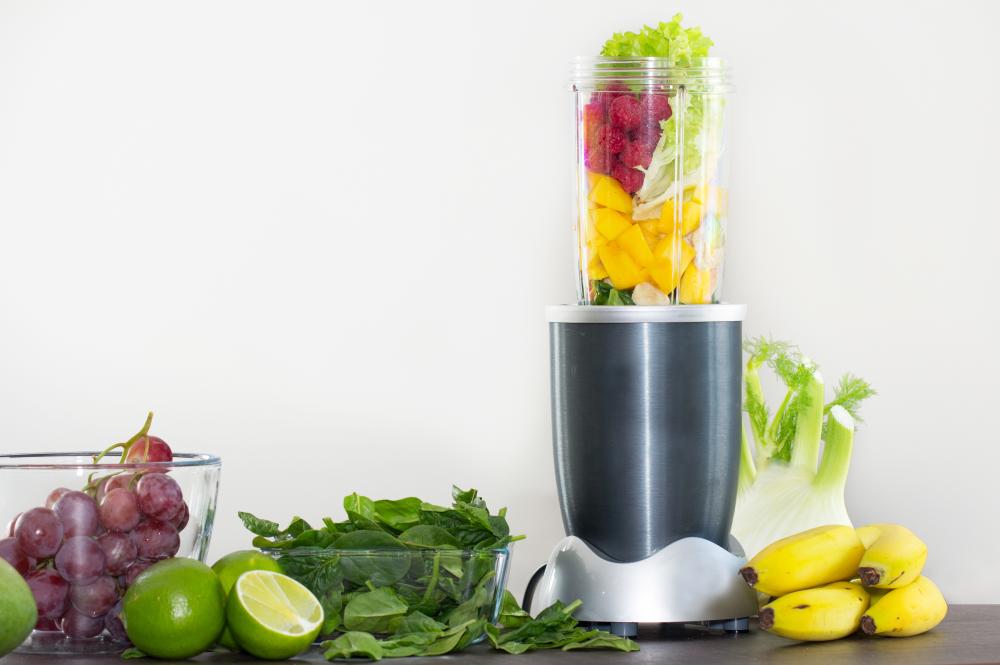Blenders vs. Juicer: What Sets Them Apart?
Fruits and vegetables are a must-have in our diet, but we sometimes lack the patience to go ahead and make a salad, or even spend a few minutes munching on a handful of carrots. However, missing out on the nutrients present in vegetables and fruit can be a real shame, which is why every modern kitchen has a blender, a juicer, or even both.
While both devices look and behave similarly, the fact of the matter is that they are still very different from one another, and this is precisely the topic of today’s article, as we will be paying close attention to what makes a blender and a juicer tick, and how you can easily tell them apart.
We’ll be discussing what each device does, how they are both similar, and, of course, what are the biggest differences between a blender and a juicer. Ultimately, the main goal here is to help you decide whether a blender or a juicer is better, given your particular lifestyle.
Table of Contents
What Is a Blender?
As you can probably tell from the name, a blender is a kitchen appliance used to blend food ingredients until you create a homogenous smoothie or cream, and, with just a few exceptions, it can process almost any kind of food you put inside of it.
As far as vegetable and fruit processes go, blenders are the ideal choice if you’re planning on making smoothies, jams, cream soup, or any other dish with a semi-liquid consistency.
Blenders are typically made up of 4 main components:
- A motorized base
- A pitcher (which can be made of plastic or glass)
- A set of blades
- A top lid
The high-velocity rotary blades crush and cut the food into tiny molecules, and thanks to the shape of the pitcher and through the use of gravity and centrifugal forces, the food is continuously directed towards the blades so that any food you put inside will eventually have a uniform consistency.
The blades spin at very high speeds, with some of the more premium models being able to reach 29000 rotations per minute (RPM). This high speed allows the food to be crushed and turned into a very fine smoothie, but it’s also why it’s recommended that you NEVER put your hand inside a blender while it’s working, or even if it’s just plugged in.
However, one great feature about blenders is that it only changes the texture of the food, so anything that was originally put in the pitcher stays in the pitcher. In the case of fruits and vegetables, the fibers are probably what you are most interested in, and they can indeed play a big role in a healthy digestive system.
Modern-day kitchen has seen the rise of 2 different types of blenders:
- Single serving blenders (like the NutriBullet)
- Jug blenders
Single serving blenders have become very popular over the years thanks to how easy they are to use, how efficient they are, and how easy it is to clean them.
All you need to do is add the ingredients into the blender’s container, attach the blender blades, turn on the machine, and then remove the blender blades. The best thing about single-serving blenders is that the container can also be used as a drinking cup, so you don’t have to worry about wasting any food by pouring it from one container to another.
On the other hand, jug blenders are ideal for those of you that like creating smoothies in bulk, because the jugs (the blender’s pitcher) tend to be very large, sometimes upwards to 2L.
One great thing about blender smoothies is that the presence of fibers makes it harder for the body to absorb all of the essential nutrients all at once, thus postponing any feeling of hunger for a much longer time.
What Is a Juicer?
Juicers are also kitchen appliances, and while certain models may have them looking exactly like blenders, the true purpose of this device is to extract the juice from fruits or vegetables, while removing any fiber and pulp.
Because of the removal of all solid parts, the juice is much thinner than whatever you would obtain from a blender, much lower in fiber, but with higher nutrient content.
Unfortunately, because a juicer separates the liquids and the solids from whatever ingredients you put inside, you’ll need to use a lot of fruits and vegetables to obtain a single glass of juice.
Because of this inconvenience, juicers are best used with fruits and veggies that have a high natural water content, such as carrots, ginger, apples, oranges, etc.
A juicer works by extracting juice from fruits or vegetables and removes fiber and pulp. The resulting juice is a thin and concentrated liquid that’s usually low in fiber, but rich in important nutrients.
However, you’ll need a fair amount of fruits and vegetables to make a glass of juice. Among the produce that a standard juicer can process include kale, spinach, carrots, ginger, apples, celery, and wheatgrass.
As far as how they work, there are currently 2 types of juicers available on the market:
- Centrifugal juicers
- Masticating juicers
Centrifugal juicers work by pressing the food ingredients against a stainer using a fast-spinning blade, and all resulting juices are drained into the waiting container, which is usually detachable.
Masticating juicers (a.k.a. cold press juicers) are a bit more complex, and therefore a bit more expensive, but they are the ideal choice for those that are very conscious about their diet.
They work by pressing and crushing the food ingredients to remove every single drop of juice, and while this process does take a lot longer than in the case of centrifugal juicers, the result is a much more nutrient-rich fruit juice.
Blenders Vs. Juicers: Similarities
Before we go ahead and talk about what sets these two kitchen appliances apart, it’s best we first talk about their similarities.
For starters, they both make out life easier in the kitchen by being able to process food ingredients at speeds and levels of efficiency that we could never even dream of reaching if done manually (when was the last time you juiced an orange by hand?).
More so, if you have any type of ailment that may prevent you from being able to properly chew (dental or jaw issues), both a blender and a juicer can be helpful since they both deliver your food in a liquid or semi-liquid state.
Lastly, both devices need wet food ingredients or to have water added if you want them to work, especially blenders, which are famous for not being able to process any dry food.
Note: For those of you that want a kitchen appliance that can handle dry food items, we recommend that you try a food processor.
Blenders Vs. Juicers: Differences
The list of differences between a blender and a juicer is much bigger than that of similarities, and that’s precisely what makes users choose whether to buy one or the other.
The first and the most difference comes from the name of the devices themselves, namely the fact that blenders crush and mix entire food items, while juicers only extract the juice from your fruits and veggies.
Another difference between the two is the fact that while both require that the food ingredients have at least a minimal amount of moisture, juicers don’t need as much as blenders, and with a little bit of both effort and determination, you may even juice things that are seemingly completely dry and solid (e.g., coconut pulp)
Another important difference is that because juicers separate the fibers and the pulp and only give you the pulp, you’ll have a very nutritious drink and be very calorically dense.
You see, since the juice does not contain the pulp and the fibers that a smoothie does, you’ll be hungry again within a very short time frame.
Not only that, but if you’re juicing fruits, you’ll end up drinking a beverage that has a ton of fructose in it (albeit natural), so you might as well be drinking a can of soda since the sugar intake will be almost the same.
Besides, drinking juice, however natural it will be, can also influence your insulin levels, and this, in turn, can make you feel hungry even if your body isn’t actually hungry.
Of course, this doesn’t mean that juicers are bad, only that you need to pay attention to how much juice you drink and what types of fruit you’re using, even if the apples in question were grown in your own backyard.
Blenders Vs. Juicers: Pros and Cons
Blenders and juicers exist for different purposes, but if you still haven’t yet decided what to include into your lifestyle, here are both the pros and cons of blending and juicing:
Blenders: Pros
Zero waste – Since blenders process everything you put inside the pitcher and only changes the texture, absolutely everything you would find in your fruits and vegetables will be present in the smoothies, including fibrous pulp.
Higher satiety levels – The fibrous pulp within the smoothies greatly slows down the digestion, so you’ll have a much steadier release of energy over a much longer period of time. Thus, if you want to avoid things like insulin spikes or munchies, you’ll feel full for longer, and thus you’ll be less prone to overeating.
Better digestion – Slow digestion doesn’t necessarily mean a bad thing. In fact, fibers help your digestion to function normally, and if you’re prone to constipation, it’s actually advised that you include extra fiber in your diet.
Blenders: Cons
Not ideal for shorter energy bursts – While we did talk about insulin and sugar levels, these can actually be something you would want to happen, especially if you’re involved in any kind of activity where you need a short burst of energy without being hindered by the feeling of a full stomach, such as sports.
Needs water – Because blenders work by continuously circulating the food ingredients in the pitcher so that they reach the rotating blades, blenders have a very hard time working with foods that are either dry or stick to the pitcher wall.
Because of this, you’ll often time need to add some extra water, and determining precisely how much to add so that your smoothie doesn’t end up too thick or too thin can be hard.
Juicers: Pros
Faster nutrient absorption – Juices are the essence of all the nutrients that are present in a fruit or a vegetable, and without any fiber and pulp to slow down the digestion, all the vitamins and minerals will be absorbed by your body in no time at all, and that’s why many lifestyle websites recommend fresh fruit juice, especially if you have an active life.
Besides, juicing is better if you’re interested in having as many nutrients per serving as possible. For example, if you want to assimilate the nutrients from 2 pounds of apples, you’d either have to drink a 1 pound smoothie or a big glass of juice, and the latter is a lot easier to pull off.
Fast digestion – While blenders promote healthier digestion, juicing promotes faster digestion. You see, because what you will be drinking is 100% liquid with no trace of fiber or pulp, your body will have an easy time digesting everything.
In fact, there are even weight-loss diets that are based exclusively on juicing, and they involve replacing all of your meals with juices that will easily go in and out of your body.
Juicers: Cons
Weight gain problems – The most notable problem with juicing, especially if you consider it a core component of your diet, is that while it may be nutrient, mineral, and vitamin dense, the amount of sugar you’ll be drinking will also be very high (especially if you’re juicing fruits).
Besides, since there will be no fiber and pulp to slow down the release of sugar in your bloodstream, you’ll experience sugar rushes very frequently, and this is coupled with insulin spikes that cause the sensation of hunger.
This would be a problem if you have self-control, but a lot of juicers tend to fall into a vicious cycle where they drink more and more juice because their last glass only made them hungrier.
FAQ: Learn More About Blenders and Juicers
Can a blender be used as a juicer?
Because blenders work by crushing the food ingredients together and mixing everything until you obtain a homogenous smoothie, it’s actually very hard to obtain just the juice.
However, if you’re just interested in obtaining a liquid that is a lot thinner than a regular smoothie, and you only have a blender at your disposal, you could always simply add more water into the blender’s pitcher, or you could use fruits that are naturally very juicy, like apples and oranges.
While this may not result in pure 100% juice, you will end up with a kind of juice that also has some extra pulp, which can also be very healthy.
What is the best juicer blender?
Modern technology allows us to create machines and appliances that can do multiple jobs, one great example being juicer blenders that can do both the job of a blender and a juicer. If you, too, are interested in such a device, we’d advise you to take a look at the Ninja BL770 Blendersince it is among the most well-received devices of its kind.
Which is better, blender or juicer?
It all depends on what you want to obtain, as well as your personal preferences. If you have a soft spot for creamy smoothies that are more filling and contain all the components of the fruits and veggies, then you should go with a blender.
However, if you want concentrated meals that are small in size but calorically dense and packed with vitamins and minerals, then a juicer is the superior option for you.
What is the difference between a juicer and a blender?
The main difference between a blender and a juicer is what type of food will result after you process your ingredients. With a blender, everything will be processed, both juices and solid components, while juicers will separate the liquid components and leave out all the solid ones.
Can you juice a banana?
Bananas are a special case when it comes to fruits in general, and while you’d have no problem blending one (you’ll need to add some extra liquid to the pitcher, though), the high levels of potassium and their creamy texture make them impossible to juice.
The same situation applies to avocados as well, since the fruit itself is not particularly dry, but because of the texture, it is great for blending but terrible for juicing.
Is a smoothie better than juice?
Both a blended smoothie and a cup of juice have their own advantages and disadvantages, so determining which is better is simply a matter of what you want from that particular meal.
For starters, smoothies have a much higher antioxidant content, and it preserves all of the fibers from the original food ingredients. These fibers will slow down your digestion, allowing your body to absorb the nutrients over a longer period of time, making them better when you need a meal that will make you feel full for longer.
On the other hand, juices are assimilated by your body very fast, and because of the naturally concentrated sugar, it is ideal for when you need sudden energy spikes.
Which blender is best for crushing ice?
If you want a blender that is particularly good at crushing ice, there are several criteria that you need to look for. For starters, look at whether the label actually states that the blender is good at crushing ice. If it doesn’t, then try to look at the blades, see what materials they are made of, and check how powerful the motor is.
One good example of a blender that is suited for crushing ice is the Blendtec Classic 575 Blender.
However, keep in mind that no matter how good a blender may be, ice is still very solid and hard to crush, and will wear down your blender’s blades pretty fast in the long run.
What vegetables should not be juiced?
While we have a tendency to believe that all fruits and vegetables can and should be juiced, there are some that we should avoid, or at least avoid making juice exclusively out of:
Broccoli – High Vitamin C and vegetable protein content, but it will cause bloating, gas, and/or cramping.
Avocado – While their oil content is high, they lack sufficient natural juices, and their creamy texture makes them better for blending rather than juicing
Certain whole fruits – Many fruits can be juices, as they have a naturally high water content, but remember to remove certain elements before blending. For example, apple seeds are poisonous, so avoid eating them.
Can you juice without a juicer?
While everyone says that you need a blender to blend and a juicer to juice, there is one way to make juice using a blender, although you’ll need to put in a little extra effort, and it will take some time.
All you need to do is take your food ingredients and blend them normally and then use a spatula and a mesh strainer in order to manually separate the pulp and fibers from the actual juice inside a bowl.
However, besides the extra time and effort put into obtaining juice this way, you must know that very small fibrous pulp can still pass through the mesh strainer and end up in the juice, resulting in juice with pulp, which isn’t necessarily a bad thing.
Why is blending fruit bad?
One major drawback in both blending and juicing is that both food products are high in sugar. You see, when you blend or juice fruits and vegetables, you also break down the plant’s cell walls, thus making the natural sugar more easily accessible to your body.
Because of that, the otherwise harmless sugars become free sugars, and these are precisely the types that get easily absorbed into the bloodstream and end up causing insulin spikes, which is something that even healthy individuals should try and avoid.
Besides, since you drink both smoothies and juices instead of chewing them, it’s harder to control exactly how much we should take in, so we are more prone to overeating, and thus have a higher chance of gaining weight.
Blenders Vs. Juicer: Conclusion
This concludes our little article, and we hope that you’ve learned more than enough to make a decision on whether a blender or a juicer is better for you.
However, if you love having a healthy lifestyle, and you like having fruits and vegetables as part of your daily caloric intake, but find it difficult to slip in an extra apple in the little time that you do have, they have both a blender and a juicer would be ideal. Both kitchen appliances aren’t big, so limited kitchen space is not a problem.
Whichever the case, we would like to know whether you prefer blending or juicing, and you can tell us by leaving your preferences in the comments section below.
More so, if there are other kitchen-related subjects that you’d like us to talk about, let us know, and we’ll get right on it in no time at all.







